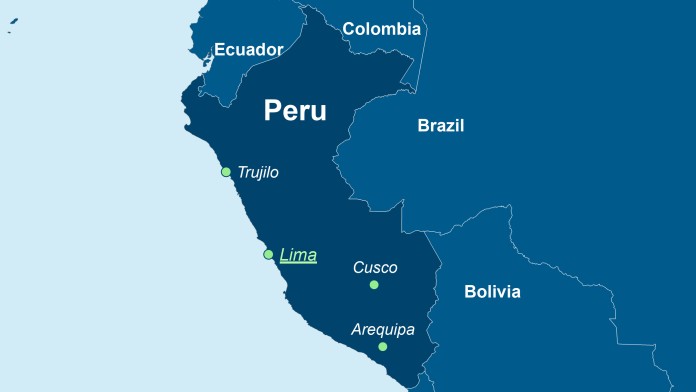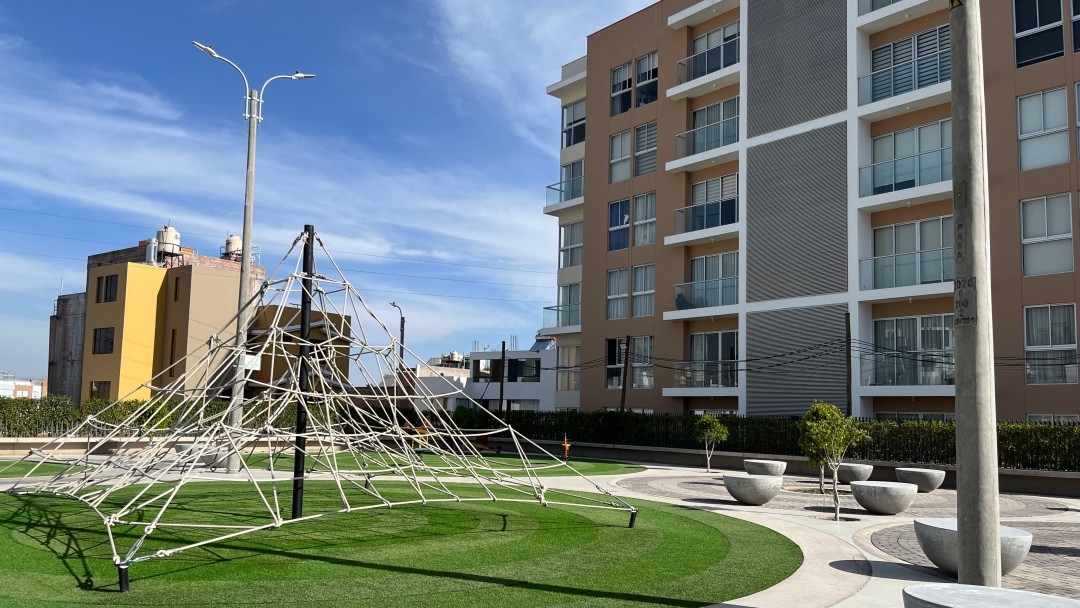
As of: 02/2024
In Peru, a lot of people are moving from the rural areas to the cities to find work. As a result, living space is scarce in cities like Lima. Poor families in particular are moving into informally built flats, some of which do not have access to electricity, drinking water or sewers. On behalf of the German Federal Government, KfW is working with the French development agency Agence Française de Développement (AFD) to support a project to build at least 5,000 energy-efficient homes for low-income families in the greater Lima area. To this end, it is granting a development loan to the state-owned Fondo Mivivienda S.A., which in turn enables the target group to obtain low-interest property financing.
Around 11 million people live in Lima and its surrounding area, which corresponds to about a third of the total Peruvian population, and the number is growing all the time. This is because many Peruvians are moving to the cities in search of employment. According to Peru's National Institute of Statistics and Information (INEI), close to 40% of Peruvian families live in inadequate housing. Houses are being built informally and often have shortcomings such as no drinking water supply, access to electricity or regulated waste water disposal. These buildings are also vulnerable to the consequences of natural disasters such as storms, floods and landslides.
The housing sector in Peru is characterised by inadequate regulation, although progress can be seen here. A new code for sustainable construction was recently approved at national level and came into force. However, the expansion of cities remains disorganised and urban planning is only possible to a limited extent.
Peru has set itself the goal of becoming climate-neutral by 2050. In any case, it aims to reduce greenhouse gas emissions by 30% by 2030 compared to 2010, and by as much as 40% if international financing is available.

In December 2023, KfW granted a development loan of EUR 100 million to Fondo Mivienda S.A., possibly followed by the same amount in a further phase. France’s AFD is providing additional funds. The total costs including the contribution of the ultimate borrowers amount to at least EUR 299 million. State-owned Fondo Mivivienda is providing the funds in the form of low-interest loans to low-income families for the purchase of energy-efficient homes.
The plan is to build 5,000 energy-efficient flats equipped with LED lighting, water-saving fittings, centralised hot water supplies, photovoltaic roof systems, and technologies for wastewater recovery for green spaces. Compared to conventional flats, these buildings save both water and electricity, which reduces operating costs. The flats are certified and verified by an international certification body. The buildings are constructed in locations where they are less exposed to the effects of storms or flooding and are not at risk from landslides.
Women will receive 45% of the loans. A further 40% of the loans will go to poor families, people with disabilities and women who are the heads of families. This makes it easier for groups who would not otherwise be able to afford home ownership or would only be able to live in informally built flats. The programme only supports the first-time purchase of real estate.
Families who earn less than EUR 1,000 net per month receive an additional government grant – the family housing bonus.
The project aims to contribute to strengthening the supply and demand for energy-efficient housing.
The funds from the project will be used to build at least 5,000 energy-efficient social housing units in Lima and the surrounding area. At least 30% of the low-interest loans are granted to ultimate borrowers from towns outside Lima. In a planned follow-up phase, the financing packages with favourable terms will be offered nationwide. The new owners of the flats can enjoy a better indoor environment and more hygienic conditions. The flats mainly benefit socially vulnerable people and families. In this respect, the project will contribute to greater social justice.
Greenhouse gas emissions will be reduced. The consumption of resources such as energy and water will be lower than in conventional homes. The buildings are protected against the consequences of climate change, which affect Peru in particular.
The social and sustainable construction projects serve as flagship projects. They have a signalling effect for the entire region. Commercial developers are gaining experience in the construction of energy-efficient buildings, which promotes awareness of energy-efficient technologies. The project is contributing to Peru achieving its national climate targets.
The project contributes to the achievement of these following United Nations Sustainable Development Goals:
KfW Group
KfW Development Bank
Country sector principles/Latin America
Sustainable financing and energy
Share page
To share the content of this page with your network, click on one of the icons below.
Note on data protection: When you share content, your personal data is transferred to the selected network.
Data protection
Alternatively, you can also copy the short link: https://www.kfw-entwicklungsbank.de/s/enzBx_Ol
Copy link Link copied